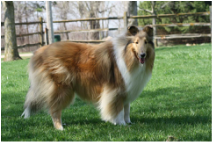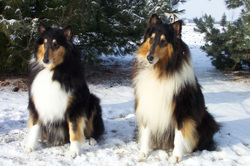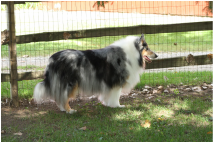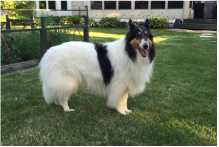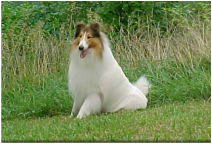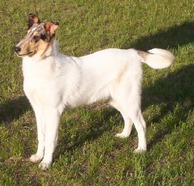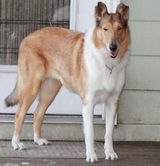About Shelties
History**
The ancestors of today’s Shetland Sheepdog, also known as the Sheltie, were the herding dogs of Scotland that also provided the rootstock for both Collies and Border Collies. Some of these dogs were quite small, measuring only about 18 inches in height. Shelties are almost certainly derived from these early Collie-type dogs, who were further developed on the Shetland Islands. Some Icelandic dogs may have also played a role in the origins of the Sheltie—and perhaps even a Black & Tan Cavalier King Charles Spaniel, too!
The Shetland Islands’ paucity of vegetation favored smaller livestock, so the dogs needed to herd them were proportionately smaller. In a land with few fences, an adept herder was essential to keep livestock away from cultivated land. As all-around farm dogs, Shelties herded not only sheep but also ponies and chickens. In some remote areas, it was customary to keep all animals in the family’s home building during winter, and the amiable herding dog no doubt worked its way right into the family part of the home. Because of its isolation from the rest of the world, Shelties were able to breed true in a comparatively short time. The British naval fleet used to frequent the islands for maneuvers and often bought puppies to take home to England. Early dogs were referred to as “toonie dogs” (toon being the local Shetland word for farm), but they were initially shown (around 1906) as Shetland collies. Collie fanciers objected to the name, so it was changed to Shetland sheepdog. The breed is far more often referred to by its nickname of “Sheltie,” however. In the early years in England, breeders often discreetly crossed Shelties with rough-coated collies in an attempt to improve on their collie characteristics. This practice led to oversized Shelties, however, and has long since stopped. Following the immense popularity of the collie, the Sheltie became the answer to the family wanting a loyal, striking pet of smaller size, and it is one of the most popular breeds in the world.
Coat Type & Colors**
The Sheltie is a small, agile dog, longer than it is tall. Its gait is smooth, effortless and ground-covering, imparting good agility, speed and endurance essential in a herding dog. It has a double coat, with a short, dense undercoat and a long, straight, harsh outer coat. The hair of the mane, frill and tail is abundant. Its expression is gentle, intelligent and questioning. Although it resembles a rough collie in miniature, subtle differences distinguish the breeds.
Shelties come in four different colors: Sable & White, Blue Merle, Tricolor, and Bi-Black.* Sables can range in color from a light golden tan to a rich mahogany. Tricolor Shelties are black, white, and tan. Blue Merle Shelties’ coats can range from a pale, silvery blue to a darker gray with black body spots of various sizes. Bi-Black Shelties are black and white without tan.
Shelties are small-sized dogs ranging from 13″-16″ high (height measured from the floor to the top of the shoulder) and weighing approximately 20 pounds.
Shelties typically live 12 to 14 years.
Personality & Temperament**
Shelties are herding dogs and are high energy. The Shetland sheepdog is extremely bright, sensitive and willing to please. This combination makes for a dog that is very obedient, quick to learn and utterly devoted to its family. It is not only gentle, playful, amiable and companionable, but also excellent with children, although it can nip at heels in play. It is reserved and often timid toward strangers. It barks a lot.
Health
As a rule the Sheltie is a healthy/hardy breed. However, the Sheltie, like all breeds of dogs, has certain health issues. Hip dysplasia, thyroid disease, eye diseases, dermatomyositis (Sheltie Skin Syndrome), von Willebrand’s disease (vWD), and epilepsy are some of the known health problems of the breed.*
About 15 percent of shelties have a genetic predisposition, resulting from a mutation in the multidrug resistance gene (MDR1 gene), to adverse drug reactions involving over a dozen different dogs. Dogs with the MDR1 gene may have adverse drug reactions to over a dozen drugs, including Ivermectin (for Heartworm control), Ioperamide or Imodium (antidiarrheal), and Acepromazine (pre-anesthetic).
Major concerns: dermatomyositis
Minor concerns: CEA, PRA, trichiasis, cataract, CHD, hemophilia, Legg – Perthes, patellar luxation
Occasionally seen: PDA, deafness, epilepsy, vWD, MDR1
For more information on MDR1, visit WSU.
For more information on sheltie health, visit the American Shetland Sheepdog Association.
*Information on this page was copied from The American Shetland Sheepdog Association website.
**Information on the page was copied from Animal Planet’s “Dogs 101”.
